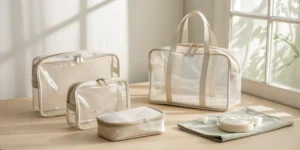
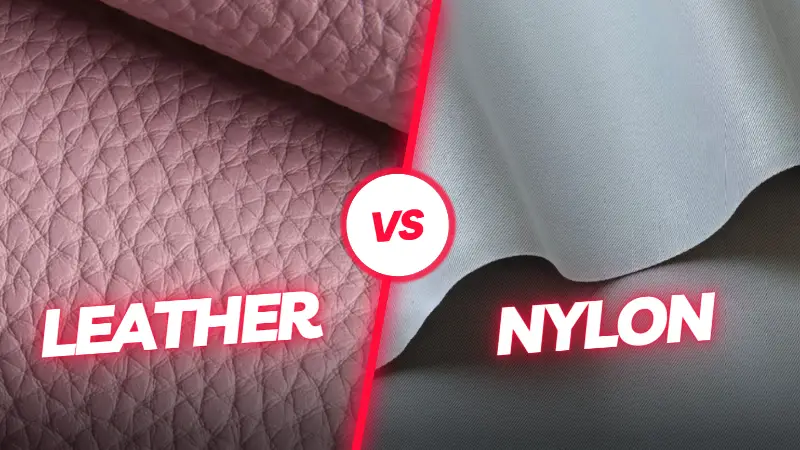
When choosing a bag, the material is key in determining its appearance, durability, and functionality. Nylon and leather are two of the most popular choices, but what are the differences between them?
Nylon bags are generally lighter, more water-resistant, wear-resistant, and more affordably priced, making them suitable for daily and outdoor use. Leather bags, on the other hand, are known for their classic appearance, luxurious texture, and the unique character they develop over time, making them more suitable for business and fashion occasions. The choice depends on your specific needs, budget, and style preferences.
When you’re standing in front of a dazzling array of bags, or browsing countless options online, a core question often arises: “Should I choose a nylon bag or a leather bag?” Both materials have their fans, and each has its unique charm and suitable scenarios. To help you make the most informed decision, today we will delve deep into the “past and present” of these two popular materials, conducting a comprehensive and detailed comparison, from manufacturing processes to everyday performance. Whether you’re seeking practicality and durability or are fond of classic style, this article will provide you with clear guidance.
Leather, simply put, is animal skin – like cowhide or sheepskin – that has been processed through a series of complex steps called “tanning” to become a usable material. This tanning process is very important; it transforms raw hides, which would otherwise easily rot, into durable, long-lasting leather. Moreover, this process preserves the natural grain of the leather, so each piece of leather looks slightly different and has its own personality. In our factory, the leather we encounter is mostly used for accessories or when clients have special high-end custom requests.
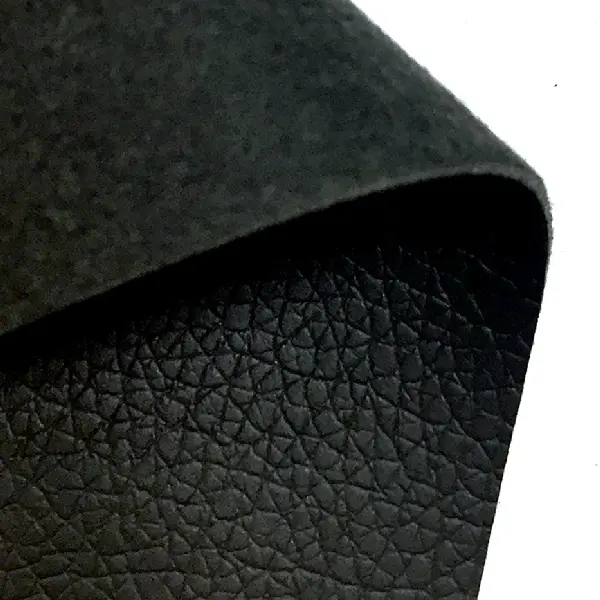
Nylon, unlike leather, is not natural; it’s a man-made synthetic material called a synthetic polymer, with raw materials mainly derived from petrochemical products. Simply put, small molecules are polymerized into large plastic molecules through chemical methods, and then these plastics are drawn into fine fibers. These fibers are then woven into fabric, which is the nylon we commonly see. Because nylon is strong and wear-resistant, it is widely used in our factory for producing various lightweight and durable bags, such as shopping bags, backpacks, promotional bags, and so on.
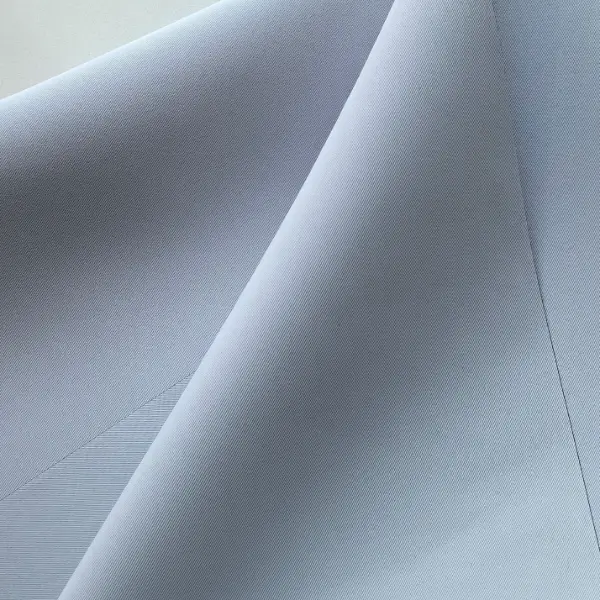
Leather is a more durable material than nylon. True
Leather is naturally stronger and more durable than nylon, especially when exposed to wear and tear.
Leather bags are always more expensive than nylon bags. False
While leather bags are typically more expensive, some high-quality nylon bags, especially designer ones, can be more expensive than some leather bags.
When choosing the right bag material for your business needs, it’s crucial to fully understand the core characteristics of leather and nylon, these two mainstream choices. The comparison table below clearly shows the main differences between leather bags and nylon bags across twelve key dimensions, such as appearance and texture, durability, weight, water resistance, cost-effectiveness, and customization potential. This table aims to help you quickly grasp the respective advantages and limitations of these two materials, lay the foundation for a more in-depth item-by-item analysis later on, and provide an intuitive reference framework for your purchasing decisions.
| Comparison Dimension | Leather Characteristics | Nylon Characteristics |
|---|---|---|
| 1. Appearance & Texture | Natural, luxurious, diverse textures, strong formal feel | Smooth/wrinkled, modern, highly functional, rich in colors |
| 2. Durability & Lifespan | Long lifespan with good maintenance, repairable | Very wear-resistant, tear-resistant, also has a long lifespan |
| 3. Weight | Relatively heavy | Very lightweight |
| 4. Water Resistance | Generally not waterproof, requires special treatment | Usually has good waterproof or water-repellent properties |
| 5. Cleaning & Maintenance | Requires professional cleaning & maintenance, relatively complex | Easy to clean, can be washed or wiped |
| 6. Price & Cost | Generally higher | Relatively lower, high cost-performance ratio |
| 7. Eco-friendliness & Sustainability | Depends on tanning process and origin, biodegradable (for some types) | Petroleum-based product, recycling and degradation are challenges |
| 8. Brand Image & Perception | High-end, classic, professional | Practical, fashionable, youthful |
| 9. Customization & Design Flexibility | Colors, embossing, etc., but shape can be somewhat limited | Diverse colors, print patterns, flexible shaping |
| 10. Suitable Occasions | Business, formal, high-end social events | Daily, casual, sports, travel |
| 11. Touch & Comfort | Natural, soft (depending on leather type) | Smooth, sometimes feels slightly cool |
| 12. Functional Features | Emphasizes texture and classic design | Often has practical designs like multiple pockets, lightweight features |
Leather bags are more suitable for professional or formal settings. True
Leather bags are considered more professional and elegant, making them more suitable for business and formal occasions.
Leather bags are immune to damage from water. False
Leather is susceptible to water damage, which can cause it to lose shape, stain, or mold if exposed to moisture for too long.
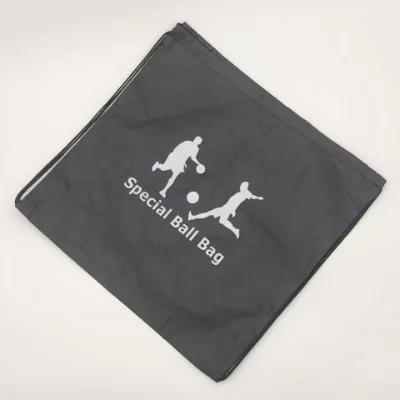
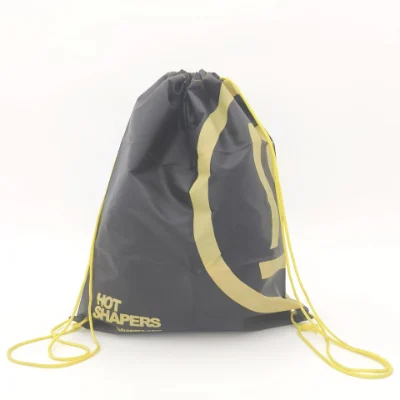
Request Free Sample
Want to evaluate our sample quality?
Request a free sample to see how our products can enhance your brand!
Recycled nylon is a more eco-friendly alternative to traditional nylon. True
Recycled nylon reduces the need for virgin nylon production and lowers the environmental impact associated with its creation.
Nylon bags are resistant to heat and high temperatures. False
Nylon can melt or deform when exposed to high temperatures, which makes it less suitable for use in extremely hot environments.
When it comes to choosing a material for bags, there isn’t an absolute “best.” The key is which one best fits your actual needs and preferences.
To sum up, choosing between a nylon bag and a leather bag really depends on your personal needs, preferences, and budget.
After comparing nylon and leather so extensively, do you have a clearer idea? In truth, the choice of material still boils down to your specific use case and preferences. We, YanXin Bags, as a bag factory with 13 years of experience, specialize in providing high-quality custom bag services, including various custom nylon bags and bags that incorporate leather elements as needed. If you are looking for a reliable nylon bag manufacturer, or need to customize shopping bags, promotional bags, or other types of bags, we promise low minimum order quantities, fast delivery, and one-on-one dedicated service. Feel free to contact YanXin Bags for a free consultation and samples, and let us help you create outstanding custom bags!
You can learn more detailed information about leather material on The leather International.
You can learn more detailed information about fabric on Textile World.

Connect Our Experts
Want to ensure the best choice for your bag?
Contact us for expert advice and quotation!

Order or no-order we are Always here to help you!
We will contact you within 1 working day, please pay attention to the email with the suffix “@yanxinbag.com”.
Order or no-order we are Always here to help you!
We will contact you within 1 working day, please pay attention to the email with the suffix “@yanxinbag.com”.